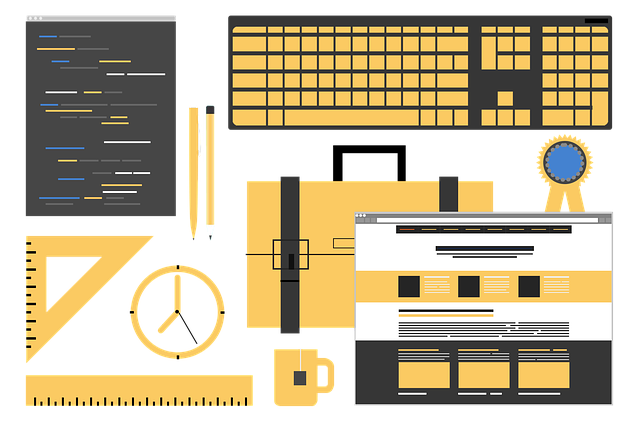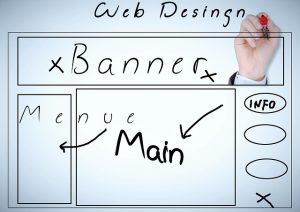From a web design perspective, many of the world’s most visited websites (https://www.alexa.com/topsites) are rather dull.
Websites such as Google, You Tube, Facebook and Amazon are not shining examples of award winning web design but they have other obvious attributes.
Here is the current top ten for the UK:
- Google.co.uk – Enables users to search the world’s information, including webpages, images, and videos.
- Youtube.com – YouTube is a way to get your videos to the people who matter to you. Upload, tag and share your videos.
- Google.com – Enables users to search the world’s information, including webpages, images, and videos.
- Facebook.com – A social utility that connects people, to keep up with friends, upload photos, share links and videos.
- Amazon.co.uk – Online retailer of books, movies, music and games along with electronics, toys, apparel, sports
- Bbc.co.uk – The BBC Homepage – Your gateway to BBC Online.
- Wikipedia.org – A free encyclopedia built collaboratively using wiki software.
- Ebay.co.uk – Person to person online auction site where you can buy or sell new and used items.
- Reddit.com – User-generated news links. Votes promote stories to the front page.
- Twitter.com – Social networking and microblogging service utilising instant messaging, SMS or a web interface.
Source: https://www.alexa.com/topsites/countries/GB
Web design now means many different disciplines
The top 10 websites, however, are excellent examples of how the combination of branding, marketing, word of mouth and useful features can generate a large and loyal base of users and customers. Some have also succeeded through deploying a large marketing budget, but long term success is not served by a poorly designed website.
Therefore we think the definition of web design should be broadened to include the following:
Style and branding
This is normally the first thing people think of with regard to web design. For many this encompasses important matters such as the following:
- Logo
- Colours
- Fonts
- Spacings
- Background colours and images
- Placement and style of menus
- Footers
Various decisions need to made on all of these important issues such as what, size, where etc. Some are very straightforward based on constraints on the expectations of your audience and technology.
Your website is likely to be viewed by multiple devices including mobiles and desktop PC so must work as a responsive design that adapts to the viewing screen size. There are also conventions and expectations that restrict where screen elements can be positioned. You wouldn’t expect the handbrake of your British car to be positioned somewhere on the roof.
For example, your web designer may suggest that your logo should be placed on the lower right hand corner for desktop PCs. However English and Western audiences conventionally read from left to right and top-down so may miss even see your logo when they first visit your web page.
While these constraints do indeed place some restrictions on the layout and style of your page, there is still ample opportunity for being creative in other areas.
Website text and content
While some might consider the website text as a separate issue to the web design, we think that this is definitely a key part of the visual and text communication of the website and its design.
A key starting point is knowing your audience. Once you have determined this then you can develop an appropriate style developed for the website content. Consider the following:
- Demographics – sex, age profile (narrow or broad)
- Locations – is the audience from one particular country?
- Education level – do you need to talk down or talk-up to your audience.
- Expertise level – is your audience expert or happy with jargon, acronyms or in-depth technical explanations?
- Images – can you use relevant images to help improve the effectiveness and engagement of the text?
Once you have determined these factors, then you can develop an appropriate editorial style. For example you may decide your audience will read more if the text is simpler and broken up by short paragraphs and relevant images.
Conversely you may also realise that your audience is more serious or academic and just prefers to read solid blocks of text.
This has a major bearing on the design of your web pages and how they are laid out.
Interactive content
Interactive is relatively new but gets a bit of bad reputation because of associations with annoying pop-ups which we think are only annoying if they are badly designed.
Interactive content breaks up the content to display it in a way that increases engagement and makes the content more likely to be read.![]()
For example recently we were laying out some web pages for a new website for a client. The old website had very long pages, small text and several sections with bullet points and large accompanying text paragraphs.
Rather than slavishly recreate the old page we created interactive tabs still had the content on the page but encourages the user to interact with the content by actively clicking on the heading to reveal the text.
This increases the impact of the text sections and decreases the likelihood of somebody missing content through scan reading.
Other interactive content includes the following:
- Progress bars
- Quizzes
- Call-to-action buttons
- Calculators
- Infographics
- Videos
- Sign-up forms for content
- Pop-ups
- Floating elements such as social media sharing etc.
These elements are not gimmicks. They actively help your website improve its engagement levels and user experience.
Final words on interactive content
These measures contribute to making the website succeed by creating a better user experience. If you can improve this then your website is more likely to achieve the following:
- Return visits
- Greater time spent on the website
- Increased likelihood of sharing on social media or linking on websites
- Word of mouth recommendation
- Calls to action and user engagement
- Increased generation of orders and enquiries
These outcomes contribute to making both your website and business succeed. Visit our web design page here: web design or use our contact form to get in touch: contact.
Further reading: Why interactive content will work for you and your clients







